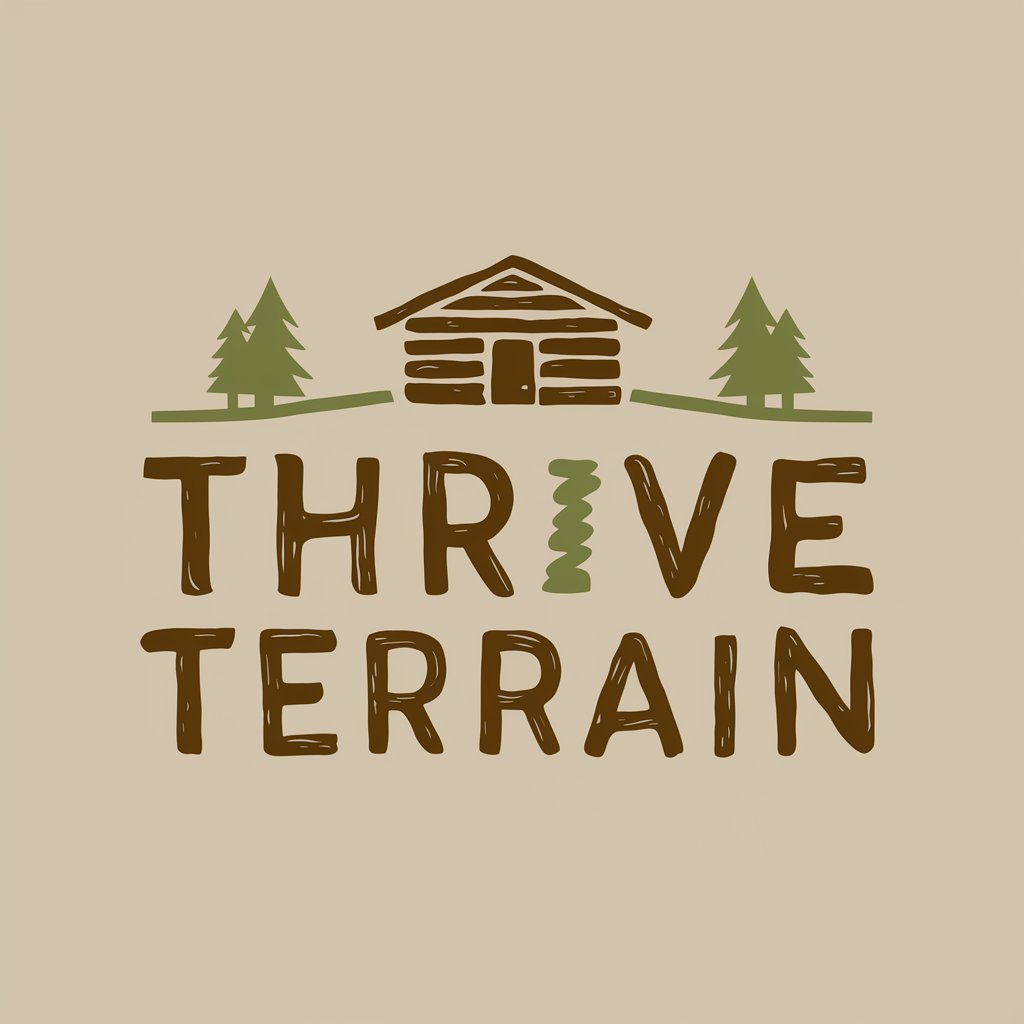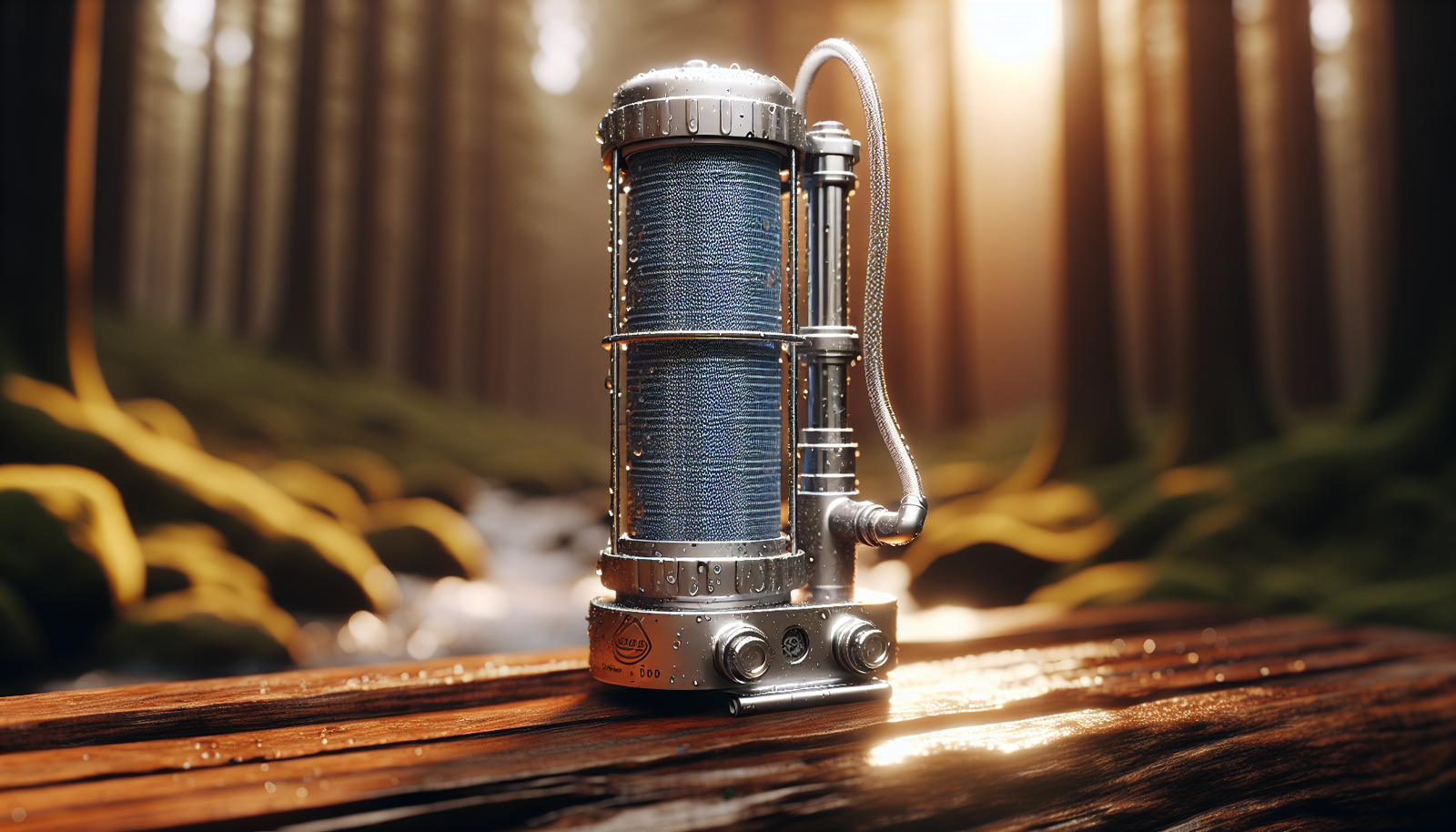? Do you know which water filtration system will keep your family safe, your off-grid life comfortable, and your maintenance time minimal?
What Are The Best Water Filtration Systems For Off-Grid Life?
You live off-grid for independence, resilience, or lifestyle reasons, and reliable water treatment is one of the most important systems you’ll rely on. This guide helps you understand the options, how each technology works, and how to match systems to your source, power availability, and long-term needs.
Why water filtration is essential for off-grid living
You don’t have a municipal treatment plant to guarantee safe drinking water, so your filtration choice protects you from pathogens, sediment, chemicals, and taste issues. The right system will fit your water source, give you sufficient daily capacity, and be maintainable with the tools and supplies you can store or access.
How to use this guide
You’ll find explanations of common contaminants, descriptions of filtration technologies, pros and cons, and decision-making guidance tailored to different off-grid scenarios. Tables compare capabilities so you can quickly match a system to your water source, power situation, and budget.
Common contaminants and what they mean for you
You need to know what’s in your water so you pick a system that removes the contaminants that matter most. Contaminants fall into categories like biological (bacteria, protozoa, viruses), physical (sediment, turbidity), chemical (pesticides, VOCs), and dissolved solids (heavy metals, salts).
Biological contaminants: bacteria, protozoa, and viruses
Bacteria (E. coli, coliforms) and protozoa (Giardia, Cryptosporidium) can cause acute illness; viruses (norovirus, enteroviruses) are smaller and harder to remove. You’ll want systems rated to remove or inactivate these organisms if your source is surface water, untreated springs, or poorly maintained wells.
Physical contaminants: sediment and turbidity
Suspended solids clog systems and make disinfection less effective, so prefiltration is often needed. If your source is a river, seasonal runoff, or a dusty environment, you’ll plan for sediment filters and regular backwashing.
Chemical contaminants: pesticides, VOCs, and taste/odor issues
Activated carbon and catalytic media remove many organic chemicals and improve taste and odor. If your source is near agriculture, industry, or uses older piping, chemical removal becomes a priority.
Dissolved solids and salts
High TDS (total dissolved solids) or salts require reverse osmosis, distillation, or specialized ion-exchange systems. These options can be power-hungry and produce wastewater, so you’ll think carefully about suitability for off-grid use.

This image is property of pixabay.com.
Key selection criteria for off-grid systems
Before you choose, consider source type, daily water demand, power availability, maintenance skill level, and budget. You’ll want redundancy and a plan for spare parts.
Water source type
Surface water, shallow wells, springs, rainwater, and hauled water each pose different risks and require different approaches. Identify your primary and backup sources to design a flexible system.
Daily demand and storage
Estimate how many liters or gallons you need per day for drinking, cooking, and hygiene. Match flow rate and storage capacity so you avoid repeated filtration cycles or shortages.
Power availability and sustainability
Some systems require electricity, batteries, or manual operation. If you’re solar-powered with limited battery capacity, favor gravity, hand-pump, or low-energy solutions.
Maintenance and spare parts
You’ll be responsible for filter changes, membrane cleaning, and pump servicing. Choose technologies you understand and that have accessible replacement parts or easy DIY options.
Budget and lifecycle cost
Initial cost, consumables (filters, cartridges, chemicals), water waste, and repair costs add up over time. Compare lifecycle costs, not just sticker price.
Overview table: common filtration technologies at a glance
| Technology | Removes Bacteria | Removes Protozoa | Removes Viruses | Removes Sediment | Removes Chemicals | Power Needed | Typical Flow | Maintenance |
|---|---|---|---|---|---|---|---|---|
| Gravity (ceramic/compound) | Yes (ceramic) | Yes | No (unless combined) | Yes | Some (with carbon) | None | Low–Medium | Replace/clean elements |
| Pump (ceramic/inline) | Yes | Yes | No (unless combined) | Yes | Some (with carbon) | Manual/Electric | Medium | Replace/clean |
| Activated carbon | Some | Some | No | Some | Yes (organics) | None | Medium | Replace cartridges |
| UV (UV-C) | No | No | Yes (inactivates) | No | No | Electric | High | Lamp replacement, clean sleeve |
| Reverse Osmosis (RO) | Yes | Yes (with prefilter) | Partial | Yes (pre) | Yes (dissolved solids reduced) | Electric/manual pump | Low–Medium | Membrane, pre/post filters |
| Distillation/solar still | Yes | Yes | Yes | Yes | Yes (volatile may carry over) | Electric/solar | Very low | Clean, remove scale |
| Biosand | Yes (over time) | Yes | No | Yes | Limited | None | Low | Occasional top-layer maintenance |
| Chemical (chlorine/iodine) | Yes (varies) | Variable | Variable | No | No | None | Low | Chemical supply, monitoring |
| Desalination (RO/thermal) | Yes | Yes | Yes | Yes | Removes salts | High | Low | High |

This image is property of pixabay.com.
Gravity-fed systems (ceramic, composite, countertop)
Gravity systems rely on gravity to pull water through media, so they work without power and are simple to maintain. You’ll often find ceramic candles, composite filters (ceramic + carbon), or large countertop reservoirs for household use.
How gravity systems work
Water flows from an upper reservoir through ceramic or composite elements into a lower chamber. Ceramic pores physically block bacteria and protozoa; carbon layers improve taste and remove many organics.
Pros and cons of gravity systems
You’ll appreciate the simplicity, low cost, and lack of power needs, but flow rate can be slow and viruses often pass through unless a chemical or UV step is added. Expect regular cleaning of ceramic elements and eventual replacement.
Best uses and capacity planning
Use gravity systems for cabins, tiny homes, or as a household backup. For families, you might need multiple candles or larger systems (6–10 liter/hour per candle) and plan for combined carbon stages to remove chemicals.
Pump filters: hand pumps and electric pumps
Pump filters give you faster flow and the ability to push water through finer media, including RO membranes. You can choose manual hand pumps for no-power situations or electric pumps for higher capacity.
Hand pump systems
You operate a piston or diaphragm pump to force water through a filter. Hand pumps like ceramic or composite units are durable, portable, and ideal for cabins or bug-out situations where power is absent.
Electric pump systems
Electric pumps allow high flow and large household RO or UV units. If you have solar + battery capacity, an electric pump can feed prefilters and an RO membrane with minimal user effort.
Pros and cons
Pumps increase flow and can push through finer filters but add moving parts and power requirements. Manual pumps give you independence from power but require physical effort and more frequent maintenance if source water is dirty.
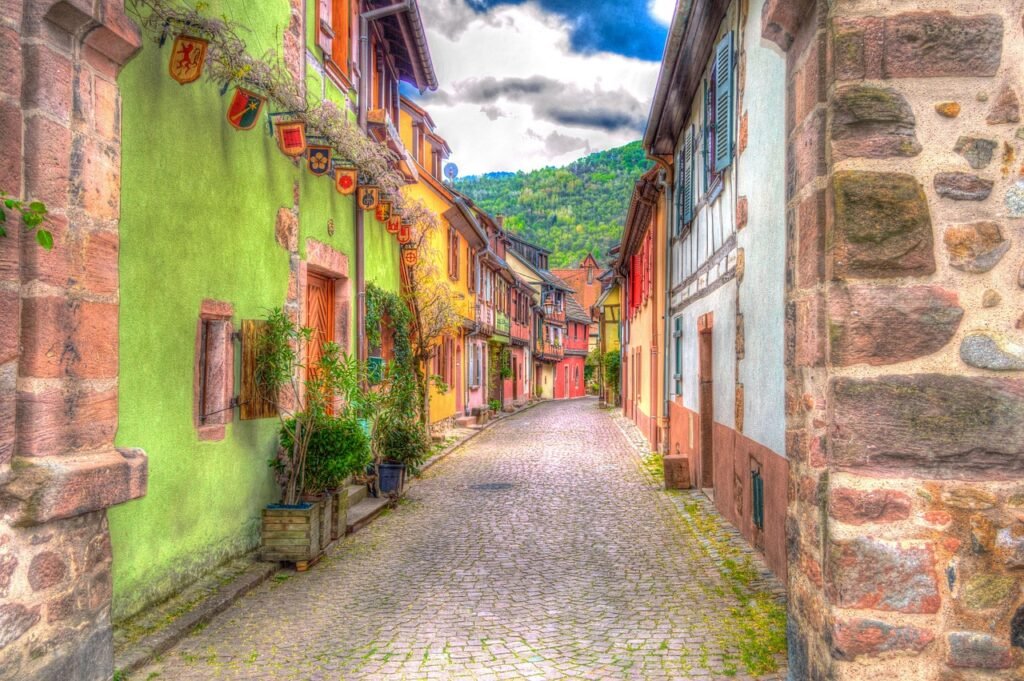
This image is property of pixabay.com.
Activated carbon and catalytic carbon filters
Carbon media adsorb organic compounds, chlorine, and many taste/odor issues, improving palatability and removing many pesticides and VOCs. You’ll often use carbon as a stage in a multi-stage system.
How carbon filters work
Water passes through media with very high surface area; organic molecules bind to the carbon. Some catalytic carbons also target chloramines and certain problematic chemicals.
Pros and cons
Carbon doesn’t reliably remove microbes or salts, so it’s not a standalone solution if pathogens or dissolved solids are a concern. It’s low-power, inexpensive, and essential as part of a larger treatment train.
Maintenance and lifespan
Carbon cartridges saturate and must be replaced according to volume processed and source quality. You’ll track taste and flow changes to know when to swap cartridges.
Ultraviolet (UV) disinfection
UV systems use UV-C light to inactivate bacteria, protozoa, and viruses by disrupting DNA/RNA, making organisms unable to reproduce. They’re fast and effective when water is clear.
How UV systems work
Water flows past a UV lamp inside a polished sleeve; exposure time and UV intensity determine effectiveness. UV requires low turbidity and proper flow regulation for reliable disinfection.
Pros and cons
You’ll get broad pathogen control without chemicals, but UV won’t remove sediment, chemicals, or turbidity. Power is required, and lamp life, sleeve cleanliness, and ballast reliability determine ongoing performance.
Using UV in off-grid settings
If you have dependable solar + battery capacity and can keep prefiltration solid, UV makes an excellent final barrier. Combine it with sediment and carbon stages for a complete household system.
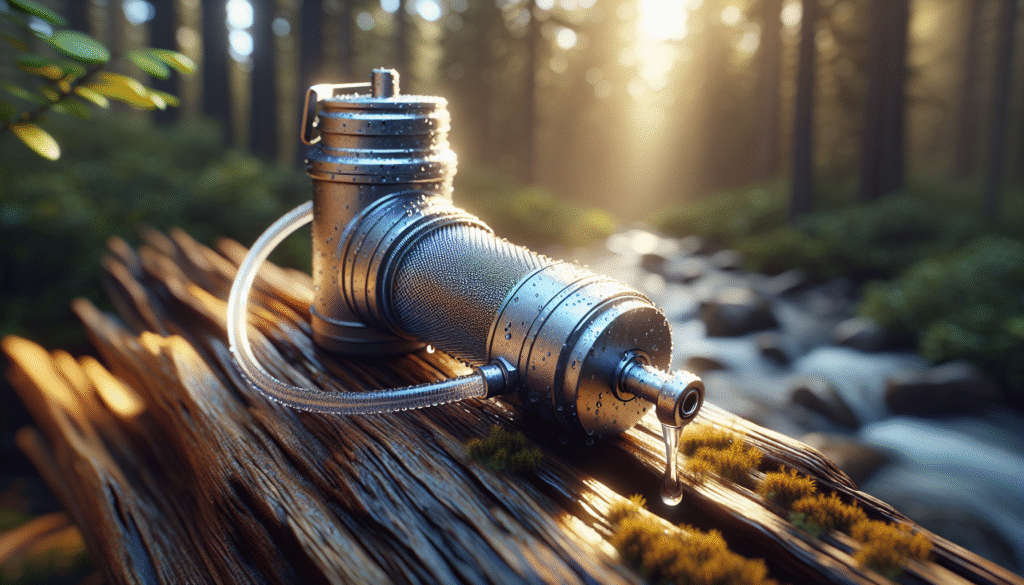
Reverse osmosis (RO) and desalination
RO forces water across a semipermeable membrane to remove dissolved solids, salts, and many contaminants, producing very pure water. It’s powerful but needs pressure and produces waste brine.
How RO works
Prefiltration removes sediment and chlorine, then a pump creates pressure forcing water through an RO membrane, where most dissolved ions and contaminants are blocked. Post-treatment may include remineralization and carbon polishing.
Pros and cons for off-grid life
You’ll get very low TDS water suitable for drinking and some medical needs, but RO requires energy for pumps and produces 2–5 times as much wastewater as product water, raising sustainability concerns off-grid. Membranes and components require replacements and occasional cleaning.
When to choose RO
Choose RO when your source has high salts, nitrates, heavy metals, or you need extremely pure water. For coastal locations with brackish groundwater, RO is often the only practical solution short of distillation.
Distillation and solar stills
Distillation boils water and condenses the vapor, leaving most contaminants behind; solar stills use sunlight to evaporate and condense. They remove many contaminants but can be slow and require energy or large surface areas.
How distillation works
Boiling kills pathogens and separates water vapor from dissolved solids; condensing yields distilled water. Solar stills are low-tech but produce small amounts per unit area and are affected by weather.
Pros and cons
You’ll get broad contaminant removal including salts and viruses, but distillation uses fuel or electricity, and solar stills are low-output. Volatile organics can sometimes carry over; carbon polishing may still be needed.
Best scenarios for distillation
Use distillation where RO isn’t feasible and energy is available (e.g., waste heat from a generator) or as emergency backup when other methods fail.
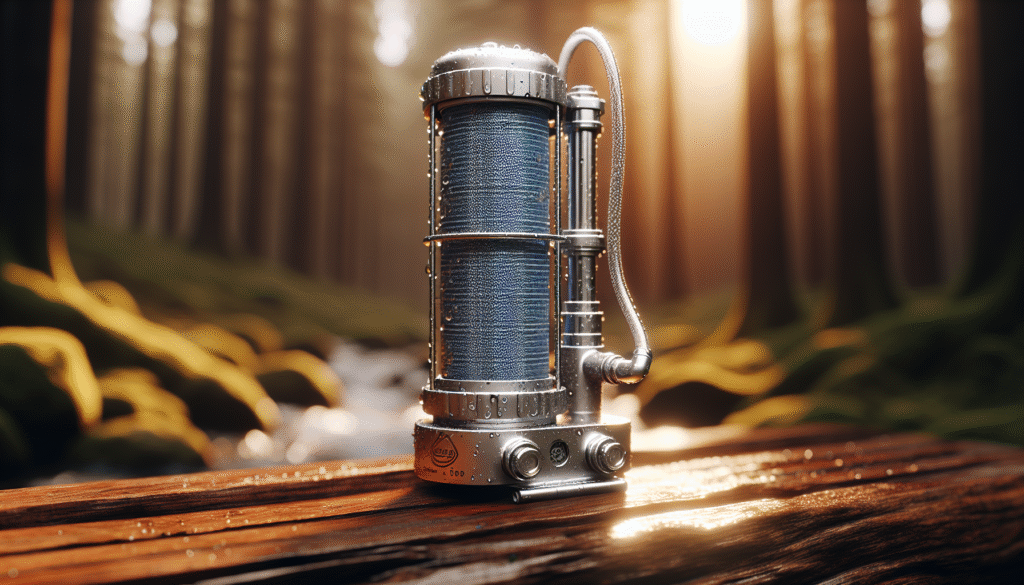
Biosand and slow sand filtration
Biosand filters use biological activity in the top layer to treat water, removing pathogens and improving clarity. They are low-tech, long-lasting, and suitable for household-scale use.
How biosand works
Water percolates slowly through sand layers; a biological layer (schmutzdecke) forms and consumes pathogens, while sand traps particles. No power is needed; effectiveness increases after a maturation period.
Pros and cons
You’ll benefit from a very low-maintenance, long-lived system that treats large volumes slowly. It’s not instant drinking water right after setup and usually doesn’t remove dissolved chemicals or salts.
Use cases and maintenance
Biosand is ideal for a homestead water station when you have surface water or shallow wells and patience for initial maturation. Occasional top-layer scraping and periodic cleaning keep performance steady.
Chemical disinfection: chlorine, chloramine, iodine
Chemical treatments are low-cost, widely available, and effective against many pathogens when used correctly. You’ll need to understand doses, contact times, and byproducts.
How chemical disinfection works
Free chlorine (bleach) oxidizes cell walls and inactivates microbes; iodine has similar effects. Proper dosing, contact time, and prefiltration to reduce turbidity are critical for success.
Pros and cons
Chemicals are portable and easy for emergency use, but taste, odor, and long-term health concerns from byproducts (THMs) matter for continuous use. They may not neutralize all protozoan cysts at standard doses without prolonged contact.
Recommended uses
You’ll keep chemicals as backup, for occasional disinfection of storage tanks, or for emergency purification when filters are compromised. For long-term household treatment, combine chemicals with filtration to reduce byproduct formation.
Combined and multi-stage systems
Most successful off-grid systems are multi-stage: sediment prefilter → activated carbon → micro/ultra/RO membrane → UV or chemical disinfection. This layered approach protects downstream components and covers a broad contaminant spectrum.
Designing a multi-stage train
Start with coarse sediment filtration to protect finer media, add carbon to remove organics, then use a barrier (membrane or UV) for pathogens and dissolved solids treatment as needed. You’ll balance flow, cost, and maintenance between stages.
Advantages of redundancy and layering
You’ll reduce the risk of failure because each stage is specialized and protects the next one. Layering also improves overall water quality and extends component life, lowering long-term costs.
Comparing systems by off-grid scenario
Every off-grid situation is different. Below are common scenarios and suggested system types for each so you can match technology to reality.
Remote cabin with solar power and family of four
You likely have moderate electricity and need 50–200 liters/day. Use a combination: sediment prefilter → electric pump → RO for TDS heavy sources or RO + UV → storage tanks. Add a gravity or ceramic backup and maintain spare membranes and parts.
Tiny house or off-grid homestead with limited power
You need efficient, low-power options that balance output and maintenance. Choose gravity-fed ceramic/composite with a carbon stage and add a small UV unit powered by a modest PV system. Keep a hand-pump and chemical backup.
RV or mobile off-grid (frequent source changes)
You need portability and flexibility. Use a portable pump filter (Sawyer style or pump-filter), a compact UV pen, and chemical tablets as backup. Prioritize light weight, compactness, and fast-swap cartridges.
Long-term survival / bug-out setup
You want reliable, durable, and repairable systems. Hand pump gravity filters, ceramic elements, and simple carbon cartridges are preferred. Store spare elements, basic replacement parts, and a solar charger for any small electronics.
Coastal or brackish supplies (salty groundwater)
You’ll need desalinization: RO with high-pressure pump and energy storage or thermal distillation if you have fuel or waste heat. Consider using brine output for non-potable uses and plan for high maintenance.
Table: matching water source to recommended systems
| Water Source | Primary Concerns | Recommended Systems |
|---|---|---|
| Clear deep well | Bacteria possible, low turbidity | UV + carbon or RO if TDS high |
| Shallow well | Bacteria, nitrates | RO (if nitrates), UV + prefilter |
| River/stream | Sediment, bacteria, protozoa | Sediment → pump/ceramic → UV → carbon |
| Pond/lake | High turbidity, algae | Rapid prefiltration, biosand/ceramic → UV → carbon |
| Rainwater | Debris, possible bird contamination | First-flush diverter, sediment filter → carbon → UV |
| Coastal/brackish | Salinity, heavy metals | Desal RO + prefiltration, energy planning |
| Hauled water (unknown) | Unknown contaminants | Broad multi-stage: sediment → carbon → UV → RO optional |
Installation tips for off-grid conditions
Proper installation improves performance and reduces maintenance. You’ll plan for freeze protection, secure mounting, and accessible filters.
Siting and freeze protection
Install equipment indoors or in insulated housings where possible, and drain lines before winter or use heat tape. Protect external tanks and piping from animals, UV degradation, and freezing.
Plumbing basics and storage tanks
Use food-grade tanks with tight lids, vents screened to keep insects out, and elevation for gravity-fed distribution. Provide easy access for cleaning and include faucets for sampling and testing.
Electrical planning for powered systems
Match pump and UV loads to your battery bank and solar array; include surge protection and fuses. Consider a manual bypass or gravity backup in case of power loss.
Maintenance plans and spare parts
You’ll sustain performance by tracking filter life, lamp hours, membrane pressure differentials, and tank cleanliness. Keep a kit of common wear items on hand.
Example maintenance schedule table
| Component | Frequency | Task |
|---|---|---|
| Sediment prefilter | Monthly (or when drop) | Clean or replace cartridge |
| Carbon cartridge | 6–12 months | Replace or according to volume |
| Ceramic candle | 1–6 months | Scrub outer layer, inspect for cracks |
| UV lamp | 9–12 months | Replace lamp, clean sleeve monthly |
| RO membrane | 2–5 years | Clean/replace as needed |
| Pump (hand) | Annually | Rebuild seals, lubricate |
| Storage tank | Annually | Drain and disinfect |
Spare parts and consumables to keep
You’ll keep extra cartridges, a spare UV lamp, membrane cleaning chemicals, O-rings, and basic plumbing fittings. Stock more if you’re far from suppliers.
Water testing and monitoring
Testing before and after installation confirms performance and helps you spot changes quickly. Regular testing is simple and should be part of your maintenance routine.
Types of tests
Use test strips for chlorine/TDS/pH, field kits for bacteria, and lab tests for heavy metals, nitrates, and VOCs. Monitor turbidity and taste as practical indicators.
When to test
Test initially during commissioning, after heavy storms or changes in source, and quarterly for bacterial checks in higher-risk sources. Test more frequently if household members get sick or if you change components.
Emergency and contingency planning
Systems fail; plan layered backups and emergency supplies so you’re never without safe water. You’ll document procedures for family members and store needed consumables.
Short-term emergency options
Keep chemical tablets, bleach, or iodine, a portable pump filter, and a UV pen in your emergency kit. Also store sterile water containers and bottled water for true emergencies.
Long-term redundancy
Design redundancy into your household system: multiple filters, a gravity backup, and a secondary source like a rainwater catchment. Keep repair manuals and local repair contacts.
Cost considerations and budgeting
Initial cost is only part of the picture; factor in replacement parts, energy, water waste, and labor. You’ll calculate cost per liter over expected lifespan to compare options objectively.
Typical cost components
Initial system purchase, pump and electrical setup, storage tanks, installation labor (if any), filter cartridges, membranes, lamp replacements, energy supply, and maintenance tools.
How to estimate lifecycle cost
Estimate liters per day × years of use, then divide total expected costs (initial + consumables + energy) by total liters treated. This gives you an apples-to-apples comparison.
Final checklist to choose the best system for your off-grid life
You’ll use a simple checklist to decide:
- Identify primary and backup water sources.
- Test water for microbes, TDS, and chemicals.
- Assess power availability and plan energy budget.
- Choose primary system (multi-stage recommended).
- Add UV or chemical disinfection as a final barrier.
- Ensure spare parts and a maintenance plan are in place.
- Install redundancy and emergency treatments.
Questions to answer before buying
You’ll want to know: What contaminants are present? How much water do you need daily? What power is available? How remote are you from parts? Will you need desalination? Use these answers to narrow choices.
Summary and recommended approaches
You’ll benefit from a layered approach: use sediment prefilters to protect media, activated carbon for taste and organics, and a barrier method (ceramic/RO/UV) for pathogen and dissolved solids control. Match technology to your source and power profile, keep spares, and test regularly.
Quick recommendations by priority
- For simplest, lowest-power household protection: gravity-fed ceramic + carbon, with UV backup if you have power.
- For high TDS or saltwater: RO with adequate energy and brine planning.
- For portability and emergency: pump filters (Sawyer/LifeStraw types) and chemical backups.
- For long-term, large-volume treatment: pump-fed multi-stage system with RO or UV and adequate storage.
You can design a reliable, maintainable water system that fits your off-grid lifestyle by focusing on the contaminants you face, the power you have, and the maintenance you’re willing to perform. With redundancy and testing, you’ll keep your water safe and your community healthy.
